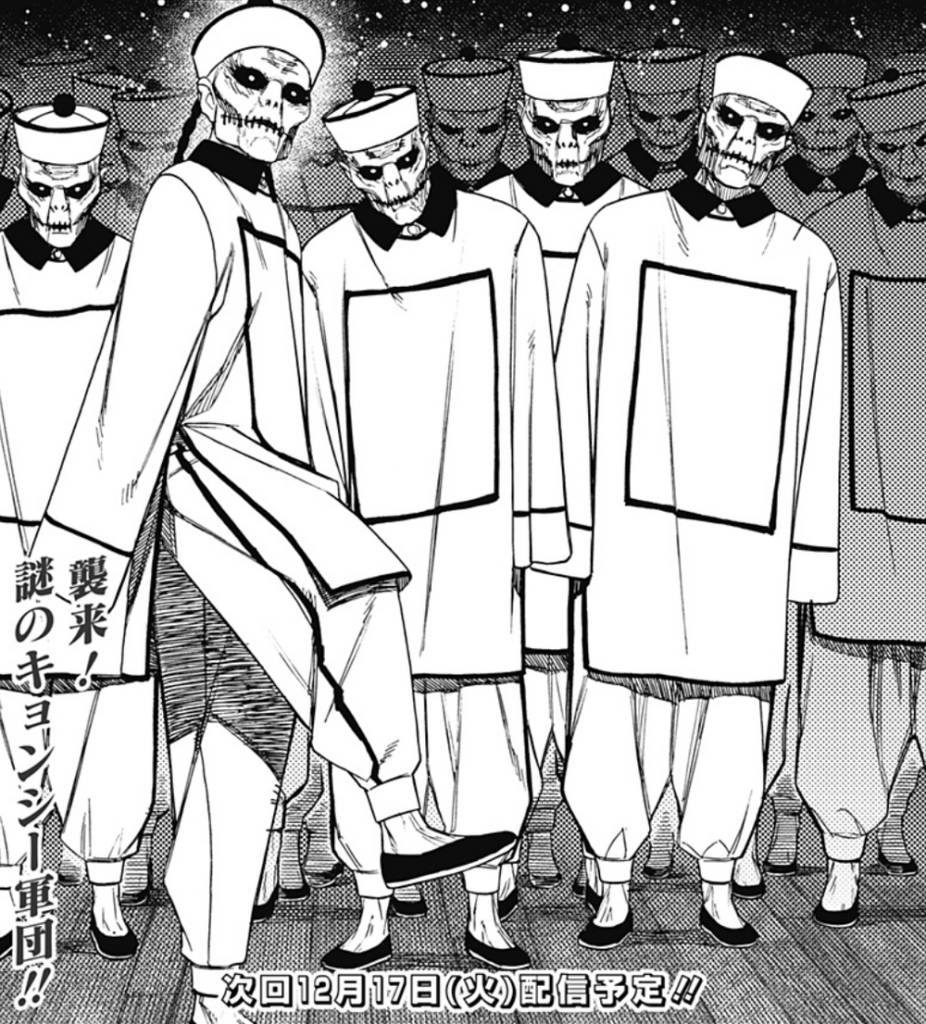
In the world of Dandadan, where urban legends and supernatural chaos intertwine, the Jiangshi make their chilling entrance as formidable, kung fu-wielding undead foes. Rooted in Chinese folklore, these hopping vampires are more than just horror myths—they’re fully animated antagonists during the Kozuka Knives Arc. Their eerie presence, martial prowess, and undead loyalty make them an unforgettable threat.
Physical Characteristics of the Jiangshi: Classic Folklore Meets Modern Manga
The Jiangshi in Dandadan are instantly recognizable for their traditional design and undead demeanor. Visually, they are reanimated corpses with mummified features:
- Dark, sunken eyes
- Stitched mouths
- Pale, expressionless faces
- Long braided hair
They don the classic Qing Dynasty attire, featuring:
- Long robes with wide sleeves
- Square panels on their chests
- Loose-fitting pants and black shoes
- Tall, flat-topped Chinese hats
This attire perfectly aligns with the stereotypical depiction of the Jiangshi from Chinese myth—preserved undead dressed like imperial officials, brought to life by dark forces.
Jiangshi and Kung Fu: Martial Arts Undead
Though mindless in appearance, the Jiangshi display an uncanny mastery of kung fu, often shouting in the heat of battle—a familiar behavior in traditional martial arts. Their coordinated combat tactics and aggressive style make them more than mere zombies; they are warriors with precision and purpose.
Their presence also serves as a callback to vintage Hong Kong horror-action films, where Jiangshi were portrayed as both comical and terrifying martial artists.
Jiangshi in the Kozuka Knives Arc: From Ambush to Defeat
Jiangshi Join the Battle at Juicy Gyoza Manufactory
The Kozuka Knives Arc marks the official manga debut of the Jiangshi. Controlled by Adachi, a mysterious woman allied with the Minotaur, they arrive at the Juicy Gyoza Manufactory just as Seiko prepares to investigate the Uchide-no-Kozuchi.
Together, the Jiangshi launch an ambush—attacking Seiko and momentarily overpowering Payase and Kashimoto. However, despite their numbers and kung fu prowess, they are outmatched by Seiko’s superior martial arts and clever use of the environment.
Eventually, Seiko’s allies rally, and the Jiangshi are defeated alongside the Minotaur, forcing Adachi to retreat.
Jiangshi Continue to Serve Adachi in Secret
Later in the arc, the Jiangshi remain by Adachi’s side, concealed from public view through paper talismans that make them invisible to others. In a bizarre yet darkly comedic scene, Adachi uses their stealth to plot an ambush against Murakami, whom she manipulates during a private encounter.
As tension rises, Kouki’s swarm of insects suddenly enters the scene, revealing the Jiangshi and disrupting the plan. Despite the chaos, the Jiangshi stay loyal, rushing to aid their master when the situation spins out of control, only for Murakami to be transported to Kami High’s gym in a supernatural twist of fate.
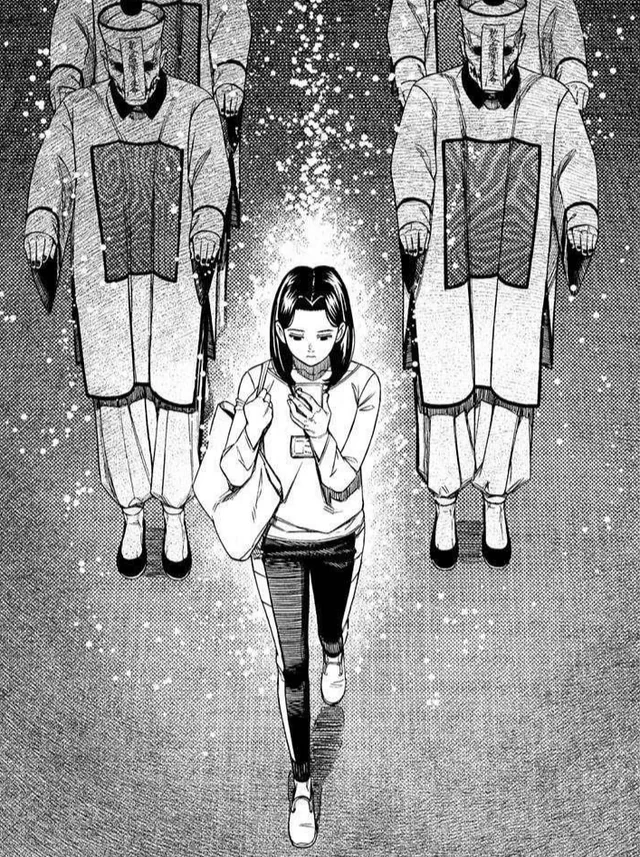
Jiangshi’s Urban Legend Origins: From Han Dynasty to Modern Horror
The Jiangshi legend dates back to China’s Han Dynasty (206 BCE–220 CE), where they were believed to be corpses reanimated through sorcery or demonic possession. Often called “hopping zombies,” these creatures are said to suffer from rigor mortis, making hopping their only mode of movement.
Traditional tales describe them as soul-absorbing revenants, kept in check or repelled by specific talismans (as seen in Dandadan) and exorcised with special rituals. Their depiction in manga and anime often fuses classic fear with creative flair, blending folklore with action-packed storytelling.
Jiangshi’s Role in Dandadan: More Than Mindless Monsters
While the Jiangshi may appear as expendable enemies in Dandadan, their inclusion adds cultural depth to the manga’s world. As animated folklore, they’re symbols of myth meeting modern manga, showing how Dandadan reinterprets ancient legends into stylish, action-centric roles.
Their allegiance to Adachi, martial discipline, and eerie silence make them stand out among the series’ many creatures, proving that even background characters can enrich the world-building and tension.
Trivia: Fun Facts About the Jiangshi
- Jiangshi means “stiff corpse” in Chinese, referring to the condition of the body after death.
- Their signature “hop” comes from rigor mortis setting in after death, making their legs stiff.
- Traditional Jiangshi are depicted with yellow paper talismans on their foreheads, which are used to seal or control them—a detail faithfully carried into Dandadan.
- In popular media, they’re often used as metaphors for social control or spiritual imbalance, depending on the era and cultural lens.
Final Thoughts: Jiangshi’s Chilling Impact on Dandadan’s Lore
The Jiangshi in Dandadan are a perfect blend of folklore authenticity and manga imagination. Whether serving as silent enforcers of Adachi or kung fu-fighting undead obstacles, their inclusion deepens the series’ supernatural roster. From ancient legend to modern manga, Jiangshi continue to captivate—and terrify—with their iconic hop and haunting presence.
-
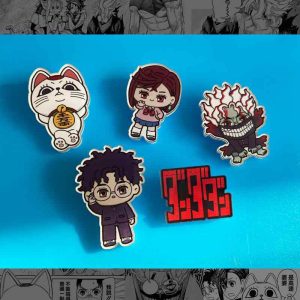 Dandadan Acrylic Pins$9.00 – $22.00
Dandadan Acrylic Pins$9.00 – $22.00 -
 Dandadan Stickers 50 Pieces$9.90
Dandadan Stickers 50 Pieces$9.90 -
 Dandadan Momo Alien Earrings$10.00
Dandadan Momo Alien Earrings$10.00 -
 Dandadan Posters Set of 10$15.00
Dandadan Posters Set of 10$15.00 -
 Dandadan Okarun and Momo T-shirt$19.00
Dandadan Okarun and Momo T-shirt$19.00 -
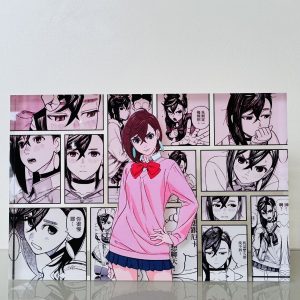 Dandadan Momo Ayase Acrylic Decor$22.00
Dandadan Momo Ayase Acrylic Decor$22.00 -
 Okarun Momo Turbo Granny Sweatshirt$24.00
Okarun Momo Turbo Granny Sweatshirt$24.00 -
 Dandadan Okarun Transformation Night Light$27.00
Dandadan Okarun Transformation Night Light$27.00 -
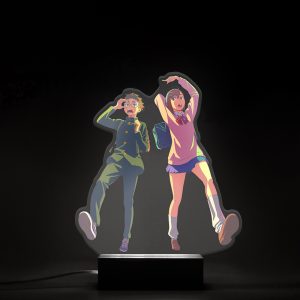 Dandadan Okarun and Momo Night Light$27.00
Dandadan Okarun and Momo Night Light$27.00 -
 Turbo Granny Hair Dryer Figure$28.00
Turbo Granny Hair Dryer Figure$28.00 -
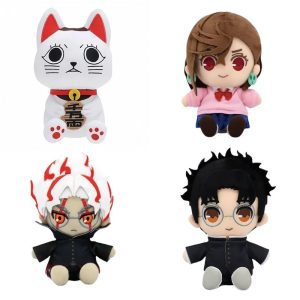 Dandadan Plushes$28.00
Dandadan Plushes$28.00 -
 Okarun Turbo Granny Form Cosplay Costume$35.00 – $99.00
Okarun Turbo Granny Form Cosplay Costume$35.00 – $99.00
